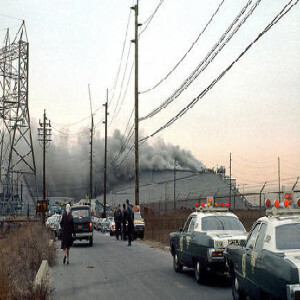
On this day in labor history, the year was 1973.
That was the day the worst industrial disaster in Staten Island took place.
Staten Island housed the world’s largest Liquefied Natural Gas storage tank.
The Texas Eastern Transmission Corporation owned the tank and operated a pipeline system that stretched from Texas to the East Coast.
The tank measured 272 feet across and was as tall as an 11-story building.
When leaks were suspected, the company had the tank emptied and shut down.
Workers had been repairing the torn Mylar insulation in the tank’s liner for months.
But then, vapors released during the repair process ignited the lining.
This created extreme temperature and pressure rise, which caused an explosion inside the tank.
The entire 6” thick concrete dome covering the tank immediately crumbled and rained down on workers inside.
Concrete and Excavating Laborers Local 731 reported that 40 workers and 3 safety inspectors were inside at the time.
None of them survived.
The explosion caused a massive crater.
Smoke billowed out for over five hours.
Investigations revealed that nitrogen, Freon 11 and oxygen, and not LNG, caused the explosion. But the cause was never determined.
Some 25 years later, the New York Planning Board began re-evaluating a moratorium on LNG facilities, in place since 1978.
They concluded that: "The government regulations and industry operating practices now in place would prevent a replication of this accident.
The fire involved combustible construction materials and a tank design that are now prohibited.
Although the exact causes may never be known, it is certain that LNG was not involved in the accident and the surrounding areas outside the facility were not exposed to risk."
More Episodes
 2024-11-06
2024-11-06
 2024-11-05
2024-11-05
 2024-11-04
2024-11-04
 2024-11-03
2024-11-03
 2024-11-02
2024-11-02
 2024-11-01
2024-11-01
 2024-11-01
2024-11-01
 2024-11-01
2024-11-01
 2024-11-01
2024-11-01
 2024-11-01
2024-11-01
 2024-11-01
2024-11-01
 2024-10-21
2024-10-21
Create your
podcast in
minutes
- Full-featured podcast site
- Unlimited storage and bandwidth
- Comprehensive podcast stats
- Distribute to Apple Podcasts, Spotify, and more
- Make money with your podcast
It is Free
- Privacy Policy
- Cookie Policy
- Terms of Use
- Consent Preferences
- Copyright © 2015-2024 Podbean.com




